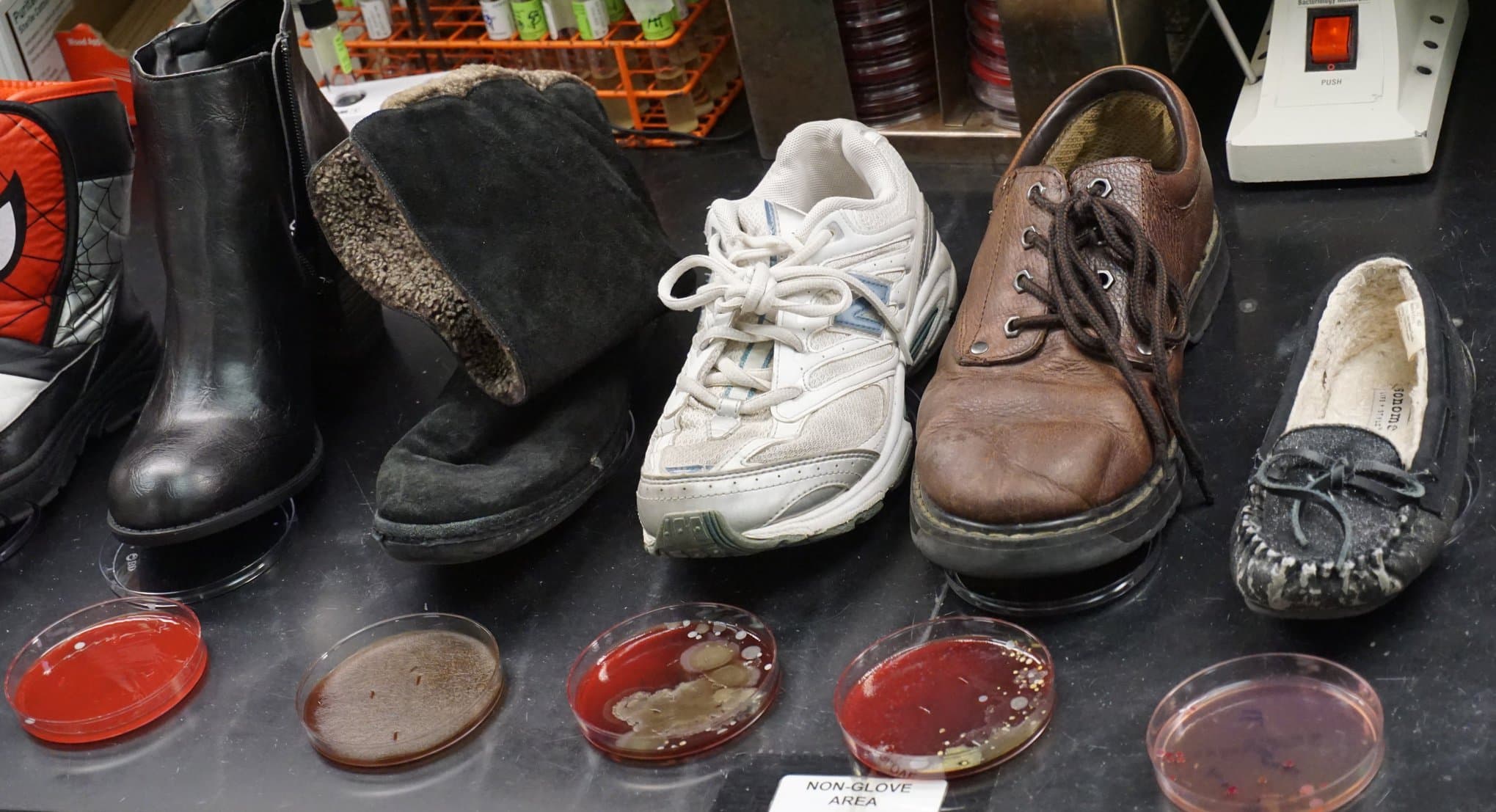Sweeping germs underfoot

Television stations, especially the evening news shows, schedule attention-getting stories to attract larger audiences, who in turn are exposed to commercial messages. They call these efforts "Sweeps month." The ratings for each four-week period enable TV stations that came up with the most appealing, promotable -- and often frightening -- story ideas to charge their advertisers more money, because more people watched.
Infectious diseases are a frequent focus for sweeps. Influenza season often blossoms in February, a sweeps month. Viewers worry, and want to know more, about emerging viruses. Ebola was in the news a lot last year. Zika virus has pushed it aside for now.
But most people in Chicago don't yet know anyone who has come down with Ebola or Zika. They worry about more mundane pathogens, the germs that make people who don't summer in West Africa or South America miserable a few times a year. People pick up those germs in many ways, sitting next to someone who sneezes openly on the bus, for example, or stepping in something vile and dragging it home.

This year, WGN-TV decided to pull together a story on household germs. They asked the question: can wearing your outdoor shoes inside the home increase the spread of disease? To answer it, they collected six pairs of shoes, mostly from friends, and brought them to the microbiology laboratory at the University of Chicago Medicine, where they asked Angella Charnot-Katsikas, MD, assistant professor of pathology, to see what kinds of germs were clinging to the soles.
The microbiology team carefully took swabs of the soles of the shoes. They dug deep into the treads and transferred what they collected to nutrient-filled plates which they incubated and then examined for bacterial growth. In late January, Robin Baumgarten, three-time Emmy Award winner and co-anchor of WGN's weekday morning news show, came back to see what had sprouted. Charnot-Katsikas pulled out a stack of petri dishes, shallow plates filled with blood agar -- a jelly-like substance with added nutrients used to culture bacteria.

A few of the petri dishes were coated with bacteria. Some were alarming, seen up close, teeming with microbes, covered from edge to edge with competing colonies, bumping into each other like tectonic plates. Others were more pleasing. One dish had about two dozen ruby-red orbs glowing on a clear gel background. Another, seen top down when the light was just right, resembled a French pastry.
"We did find a lot of bacteria," said Charnot-Katsikas. "Six out of six shoes produced organisms. But most of them were what we call environmental, more or less ubiquitous organisms that don't cause illness in a healthy person."

They found potentially harmful "gram-negative" bacteria on one pair of shoes. The red orbs on the clear dish turned out to be Pantoea agglomerans, a gram-negative bacterium from the family Enterobacteriaceae.
P. agglomerans can be an opportunistic pathogen. It is not usually harmful for healthy people, but in patients with a damaged immune system it can cause serious infections.

"It is an enteric organism," she explained. "It comes from the lower digestive tract, the intestines. It can also be found in the soil. You don't want to know how it got onto your shoe."
The take-home message from this experiment, Charnot-Katsikas said, was "not to worry but to take off your shoes at home.

"You don't know what you might be bringing in with you," she said. "Your shoes are almost certainly carrying bacteria, chemicals, dirt, a lot of things. There's no need to get obsessed about cleaning, unless you've got a toddler crawling through the house on his hands and knees, but removing your shoes is still a good idea. And wash your hands before you prepare food."

